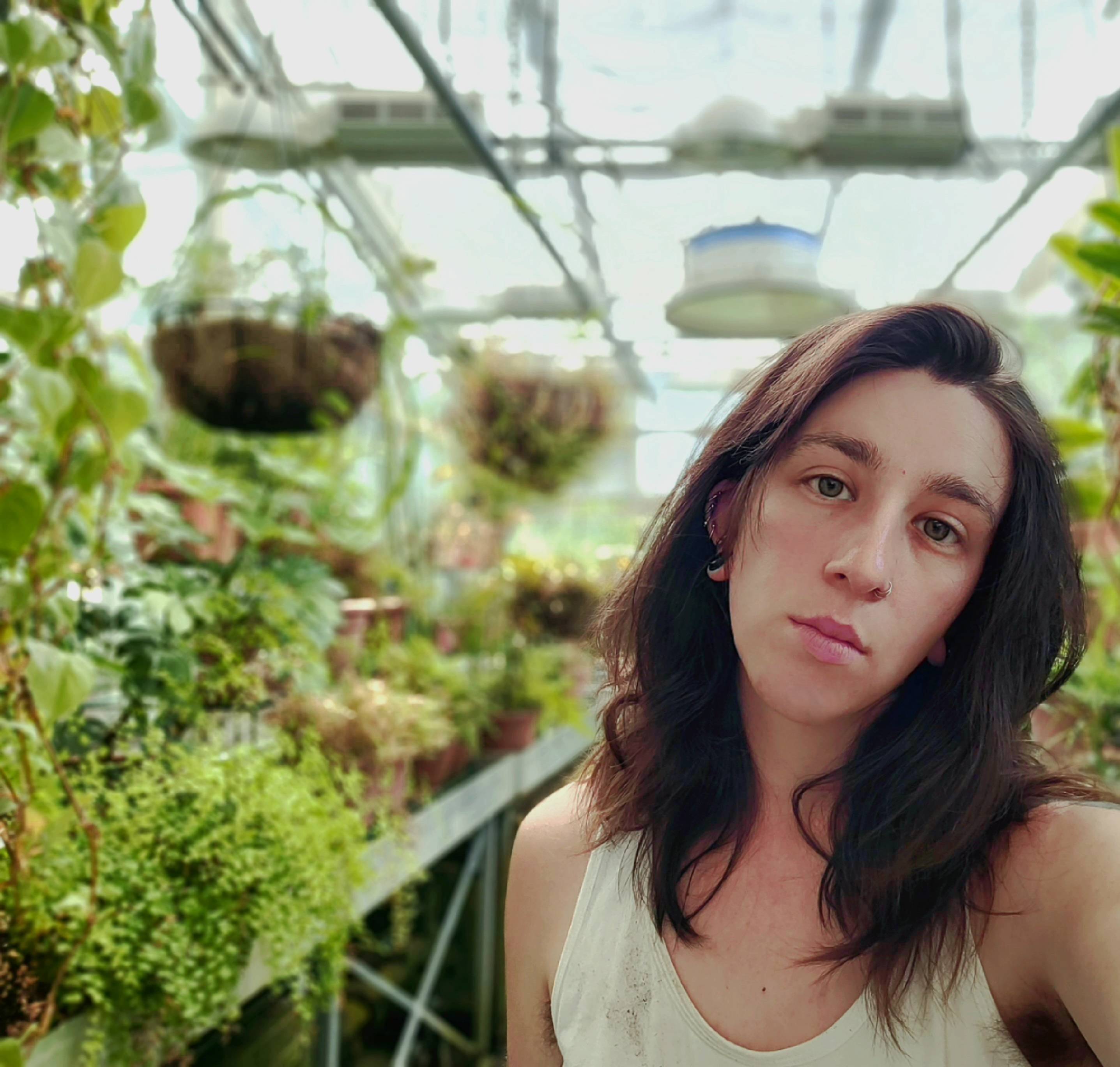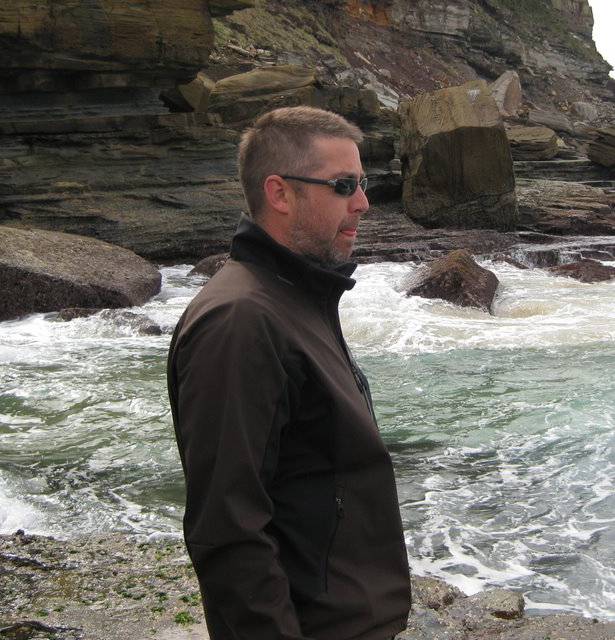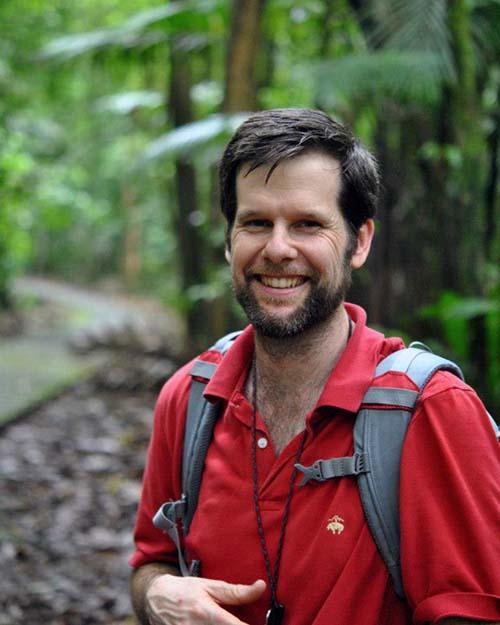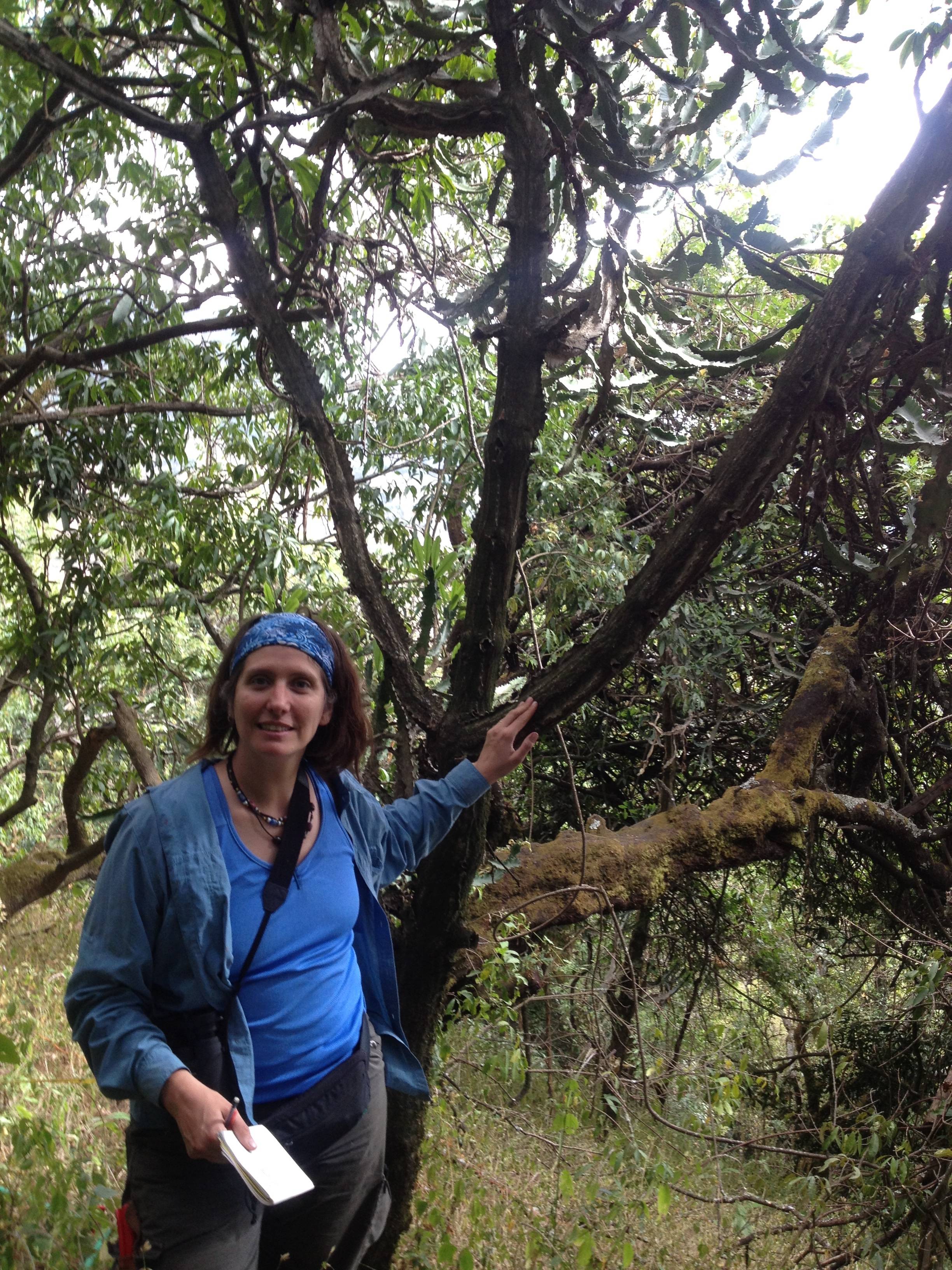The Colgate University Greenhouse is home to an extensive collection of unique plants, from all over the world. This space serves as a living classroom and laboratory to support student learning and research. The Greenhouse is open year-round to students, faculty, staff, and the public for public tours and active participants in the university's scientific outreach efforts. To schedule a field trip or to find out more information about Colgate's Science Outreach program, please call 315-228-6125 or email scienceoutreach@colgate.edu
Greenhouse Mission
The Colgate University Greenhouse team is committed to making the Greenhouse a place that promotes learning and sharing, fosters a safe space for people regardless of their background, and acts as a diverse site for future students and community members. Our vision is to create an environment where people feel liberated, joyous, and empowered to develop a closer relationship with nature. We recognize that nature holds many opportunities for innovation, which is why we nurture research for faculty members and students alike. The Greenhouse is a place for inclusion and diversity. Part of the vision is to create an immersive and inclusive environment, where students and faculty members are learning from each other and encouraging others to pursue their interests in interdisciplinary fields. Our work at the Greenhouse aims to help students improve their environmental literacy and foster a desire for more sustainable communities worldwide. We also hope to encourage respect for others, the Earth, and nature in our various endeavors. Our vision for the future of the Greenhouse must take everyone into account. There should be no barriers preventing a passion for nature or STEM education. If you have any suggestions on how to make our greenhouse more sustainable and accessible, please reach out to sdougherty1@colgate.edu.
The Colgate University Greenhouse recognizes the history of the indigenous peoples of Onyota’a:ká, or the people of the Upright Stone of Oneida Nation, whose ancestral lands Colgate University now stands. Our collective responsibility to acknowledge past colonial histories drives our ongoing commitment to social justice. We acknowledge the history of indigenous peoples and its implications for our work and passion for STEM education. At the Colgate University Greenhouse, we hope to commit to small yet meaningful acts that help to dismantle the legacies of violence, displacement, and settlement that bring us here today.
The Colgate University Greenhouse is a safe space for people of all backgrounds, no matter their race, gender identity, sexual orientation, socioeconomic status, or disability status. At the Colgate University Greenhouse, we believe in fostering the most inclusive environment possible and actively dismantling systems and ideologies that make students feel unwelcome or unheard. No form of bigotry or hatred is tolerated at the Colgate University Greenhouse. Everyone deserves to feel a sense of belonging while simultaneously having the opportunity to connect with nature and its many manifestations.
Our work towards making the Colgate University Greenhouse inclusive and accessible is an ongoing process. As we continue to improve the Colgate University Greenhouse, we will work diligently to remove barriers that prevent students with disabilities from navigating the space. Such barriers include inaccessible walkways, small text, and loud sounds. We aim to utilize the many accessibility resources we have on campus, including collaboration with the Office of Disability Services (ODS), to ensure that the Colgate University Greenhouse uses our available space efficiently and inclusively. To remain steadfast in our core values, we aim to work together to create a more accessible space that will empower all students.
1. Seeing ourselves honestly and critically within a global and historical perspective: recognizing that our beliefs, identities, interests, and values are in part a reflection of our background, education, and life experiences.
2. Understanding the methodology, modes of thought, content, and discourse of a particular scholarly discipline: articulating questions for research and crafting a coherent argument so as to produce substantial work in our chosen field.
3. Conducting interdisciplinary inquiry: synthesizing viewpoints from multiple disciplinary perspectives so as to overcome the limitations of any one perspective.
4. Appreciating the myriad modes of human creative expression across time and place.
5. Investigating human behavior, social relations, and institutions: to understand the complex relationship between the self and society.
6. Examining natural phenomena: using the methods of science, and understanding the role of science in contemporary society.
7. Acquiring valuable habits of mind: listening and reading well; thinking critically and creatively; asking challenging questions, gathering relevant information, and constructing cogent arguments to answer them.
8. Communicating well: speaking and writing correctly and precisely; fluency in a second language; presenting information effectively.
9. Setting an example of ethical behavior in public and in private: taking a principled stand for what we believe and being held accountable for our actions; upholding the legal and ethical uses of information.
10. Being engaged citizens and striving for a just society: embracing our responsibilities to local, national, and global communities; using our influence for the benefit of others.
11. Respect nature and the diversity of life on earth: recognizing our individual and collective responsibilities for the stewardship of the Earth’s resources and the natural environment.
12. Growth in both confidence and humility: affirming a set of values while respecting and learning from the diverse perspectives, identities, ways of life, and philosophies of others.
13. Continuing to learn beyond Colgate University: sustaining a lifelong curiosity and growing in knowledge and wisdom.
Greenhouse Collection
Housed in the facility are approximately 1,000 different species, including ferns, orchids, cycads, cacti, and succulents. We have a unique assortment of bromeliads, epiphytes, plants of economic importance, and a variety of flowering vines. This astounding collection is a culmination of many years worth of travel, seed saving, and research by several of the Colgate Biology Department faculty and staff.
The Facility
The greenhouse is located in the Ho Science Center. It features:
The six plant zones within the greenhouse, are designated as such:
- A tropical house
- A temperate house
- An arid house
- A fern house
- Two faculty and student research zones
Community Outreach
Greenhouse tours are available to school groups, clubs, and individuals interested in learning about our plant collection and research. Tours are often coupled with a visit to Colgate’s Ho Tung Visualization Laboratory.
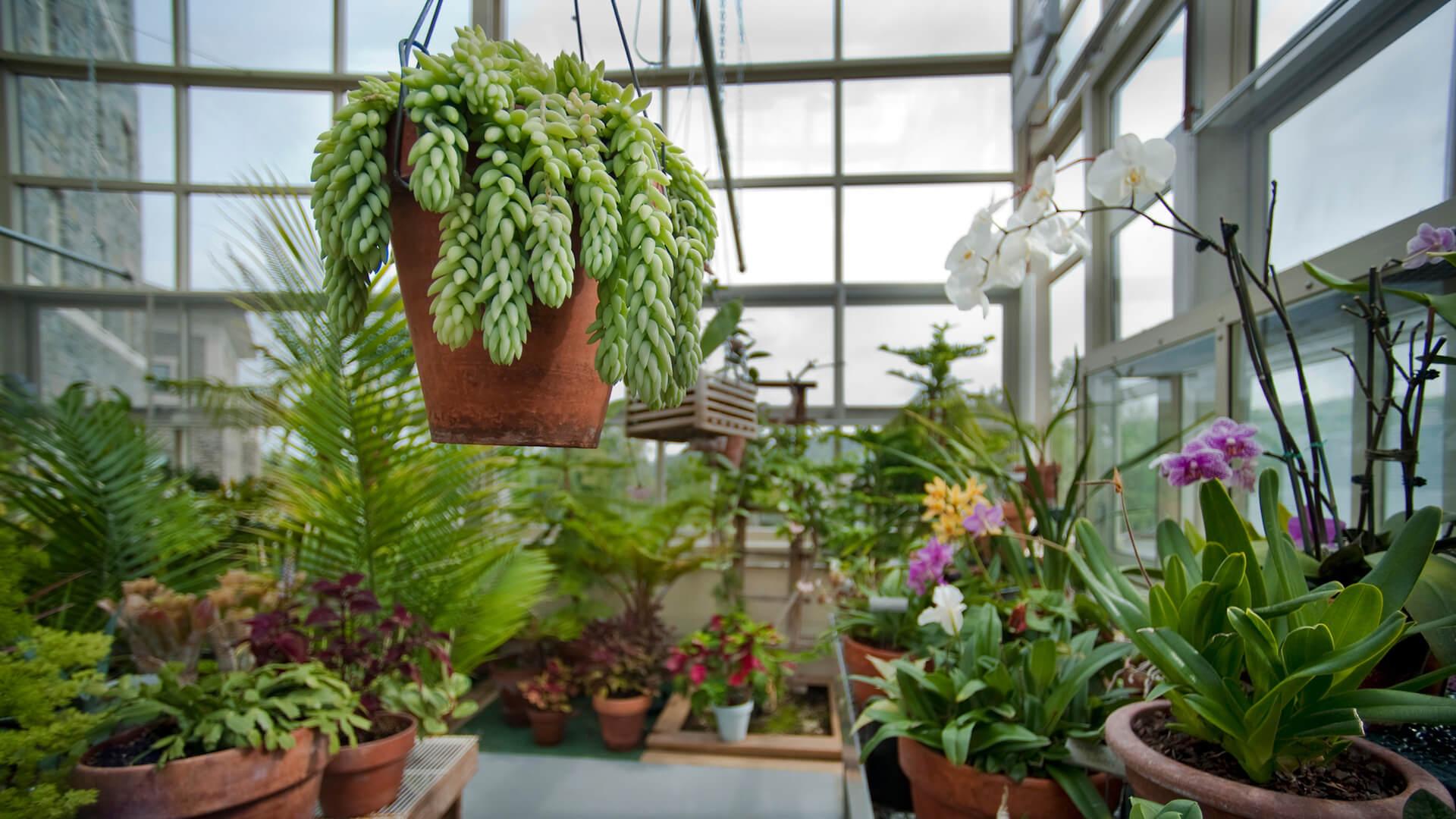
A collection of nearly 1,000 plant species demonstrates diversity and facilitates teaching and research throughout the year.
Our undergraduate biology students work directly with faculty on graduate-level research in the greenhouse throughout the year.
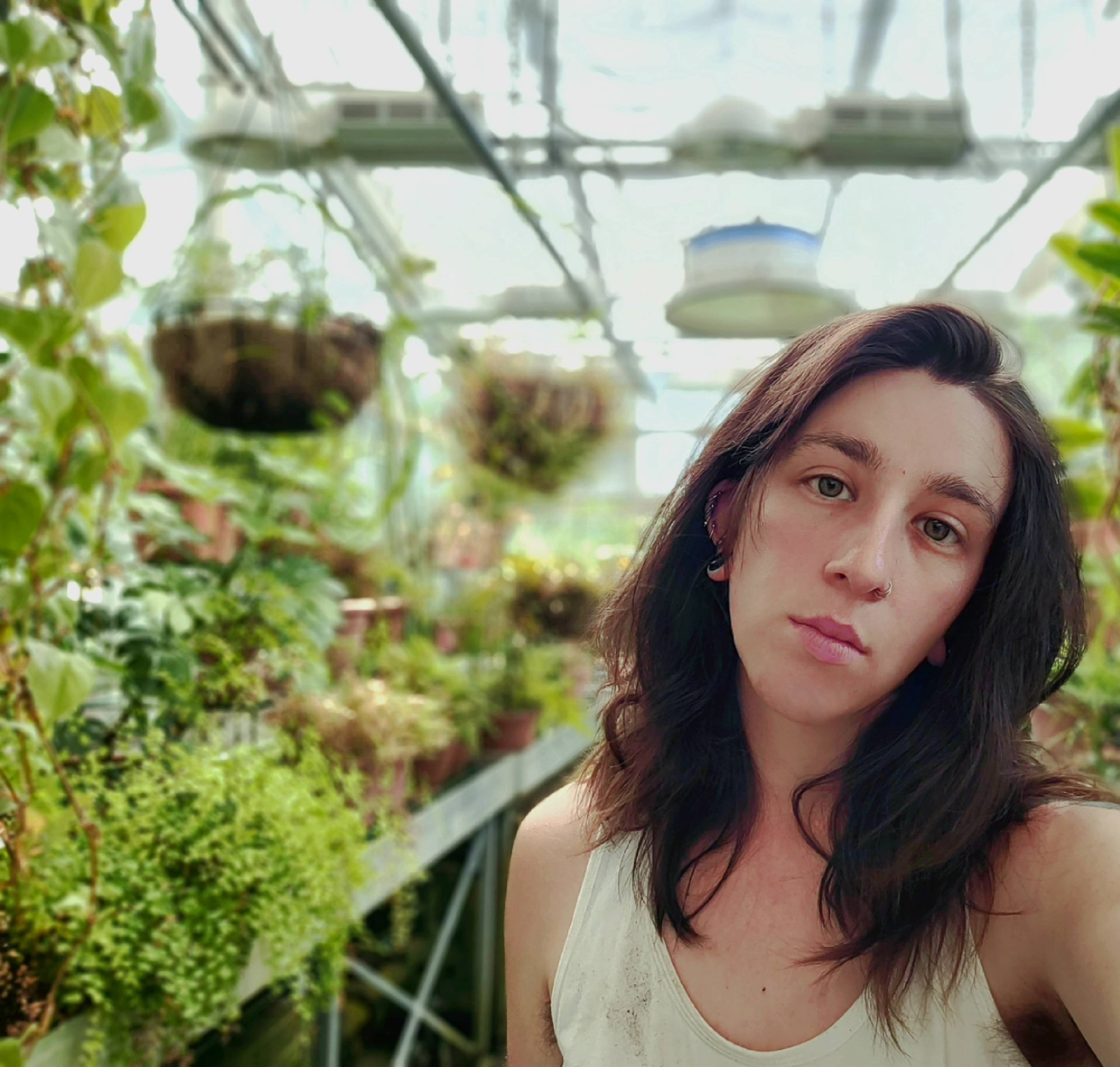
Sara Dougherty (she/they), greenhouse superintendent, works to maintain the university's conservatory collection and research plants. She also takes lead on managing the greenhouse work-study team and oversees all greenhouse operations.
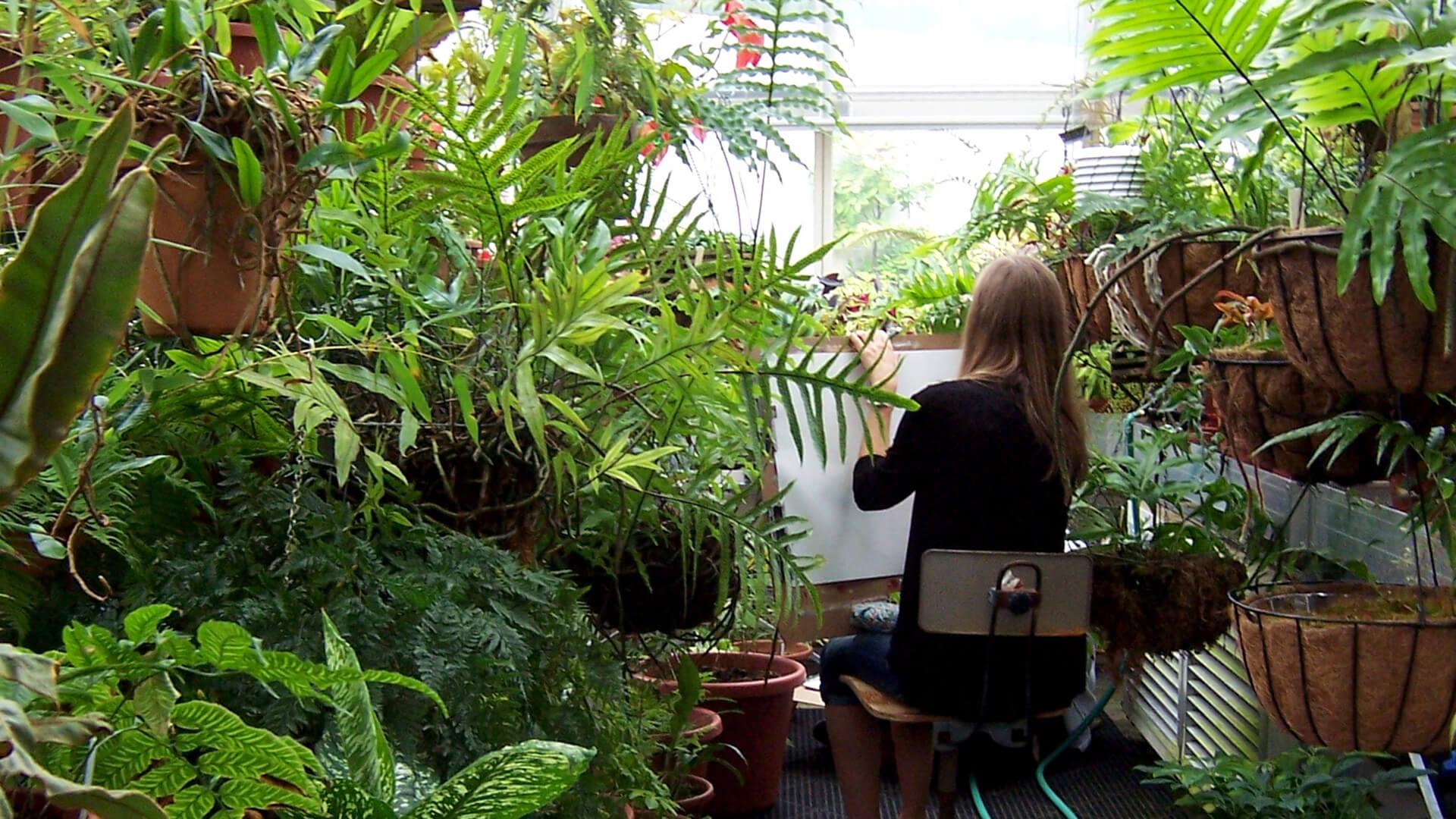
The greenhouse can also simply be a serene spot for reflection. Colgate art students have used the conservatory to find inspiration.
Contact Information
Associated Faculty
- M 12:30pm - 1:30pm (336 Ho Science Center)
- TR 10:00am - 11:30am (336 Ho Science Center)
